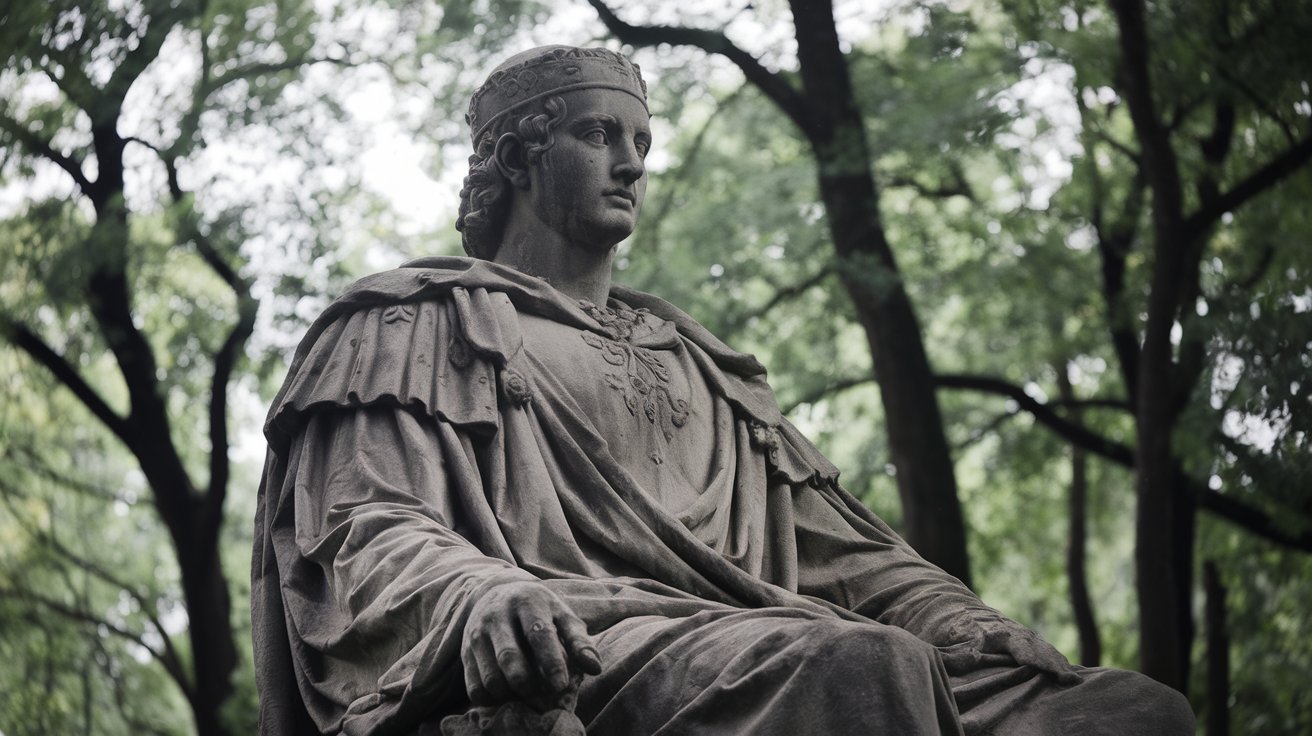
Ever wondered about the Roman emperors who didn't make it into the spotlight? While names like Julius Caesar and Augustus are well-known, many emperors have been overshadowed by their more famous counterparts. These forgotten emperors played crucial roles in shaping the Roman Empire, from administrative reforms to military conquests. Their stories are filled with intrigue, ambition, and sometimes scandal. This article dives into the lives of these lesser-known rulers, shedding light on their achievements and controversies. By exploring their reigns, we gain a deeper understanding of the complexities of Roman history and the enduring impact these figures had on the empire.
Key Takeaways:
- The Roman Empire had many forgotten emperors, like Nero and Caligula, who left lasting impacts, both good and bad. From paranoia to gladiatorial exploits, their reigns were filled with drama and intrigue.
- Some emperors, like Vespasian and Trajan, brought stability and prosperity to the empire through military campaigns, social reforms, and architectural achievements. Their legacies continue to shape history.
30 Facts About Forgotten Emperors
The Roman Empire, spanning from 27 BC to 476 AD, saw many emperors rise and fall. Some left indelible marks, while others faded into obscurity. Here are 30 intriguing facts about these often-overlooked rulers.
Nero: The Infamous Tyrant
Nero's reign is one of the most infamous in Roman history. His actions and policies have left a lasting impression.
- Nero ascended to power at just 16 years old and ruled until his death at 30.
- The Great Fire of Rome in AD 64, which lasted nine days, destroyed much of the city.
- Nero's reign saw the Parthian War, ending in AD 63 with a diplomatic solution.
- Declared an enemy of the state by the Senate, Nero committed suicide in AD 68.
Tiberius: The Reluctant Leader
Tiberius was the second Roman emperor, known for his reluctance to rule and his administrative skills.
- Tiberius ruled from AD 14 to 37, succeeding Augustus.
- He was a meticulous administrator, enhancing the empire's strength and prosperity.
- Tiberius retreated to Capri in AD 26, leaving Rome in the hands of Sejanus.
- Sejanus's fall led to a power vacuum, paving the way for Caligula's rise.
Caligula: The Misunderstood Autocrat
Caligula's reign is often remembered for its initial promise and subsequent descent into paranoia and brutality.
- Caligula ruled from AD 37 to 41, initially popular for his charisma and public games.
- After a brief illness, Caligula became paranoid and vengeful.
- His erratic behavior and brutal policies led to his assassination.
Elagabalus: The Sex-Crazed Emperor
Elagabalus's reign is shrouded in controversy, marked by scandalous behavior and a lack of reliable sources.
- Elagabalus ruled from AD 218 to 222, subjected to the damnation of memory.
- Known for his limitless libido, he engaged in scandalous behaviors.
- His legacy is often overshadowed by his controversial actions.
Vespasian: The Stabilizing Force
Vespasian's reign marked the beginning of the Flavian dynasty and brought stability to the empire.
- Vespasian ruled from AD 69 to 79, stabilizing the empire's finances.
- He initiated a vast building program, including the construction of the Colosseum.
- Vespasian expanded Rome's territories, particularly in Britain.
- He suppressed the Jewish revolt in Judea.
Trajan: The Best Emperor
Trajan is often regarded as one of the greatest Roman emperors, known for his military campaigns and social reforms.
- Trajan ruled from AD 98 to 117, expanding the empire's boundaries.
- His military campaigns secured vital trade routes and increased the empire's wealth.
- Trajan implemented social reforms, such as expanding the grain dole system.
- He introduced the alimenta welfare program.
Hadrian: The Builder and Traveler
Hadrian's reign is noted for his extensive travels and architectural achievements.
- Hadrian ruled from AD 117 to 138, building Hadrian's Wall in Britain.
- He reformed the Roman army, making it more efficient and disciplined.
- Hadrian constructed numerous structures throughout the empire.
Commodus: The Gladiatorial Emperor
Commodus's reign is infamous for his gladiatorial exploits and extravagant lifestyle.
- Commodus ruled from AD 180 to 192, fancying himself a new Hercules.
- He fought as a gladiator in the arena, leading to his eventual downfall.
- His reign was marked by extravagance and tyranny.
Caracalla: The Brother-Killer
Caracalla's reign was characterized by violence and instability, securing his throne through brutal methods.
- Caracalla ruled from AD 211 to 217, murdering his own brother to secure power.
- His reign ended with his assassination, leaving a legacy of brutality and chaos.
The Legacy of Overlooked Rulers
Forgotten emperors of Rome offer a fascinating glimpse into the complexities and challenges of ancient politics. From Nero's tyrannical reign to Hadrian's architectural achievements, each ruler left an indelible mark on the Roman Empire. Their stories remind us of the dynamic nature of history and the enduring impact these figures have on modern society. Despite their often tumultuous reigns, their contributions shaped the empire's administrative, military, and cultural landscape. Understanding their legacies provides valuable insights into the evolution of governance, law, and architecture. By examining these often-overlooked emperors, we gain a richer understanding of ancient Rome's complexities and challenges. Their stories serve as a testament to the enduring legacy of historical figures and their lasting impact on contemporary society. So, next time you think of Rome, remember the forgotten emperors who played crucial roles in shaping its history.
Frequently Asked Questions
Was this page helpful?
Our commitment to delivering trustworthy and engaging content is at the heart of what we do. Each fact on our site is contributed by real users like you, bringing a wealth of diverse insights and information. To ensure the highest standards of accuracy and reliability, our dedicated editors meticulously review each submission. This process guarantees that the facts we share are not only fascinating but also credible. Trust in our commitment to quality and authenticity as you explore and learn with us.


